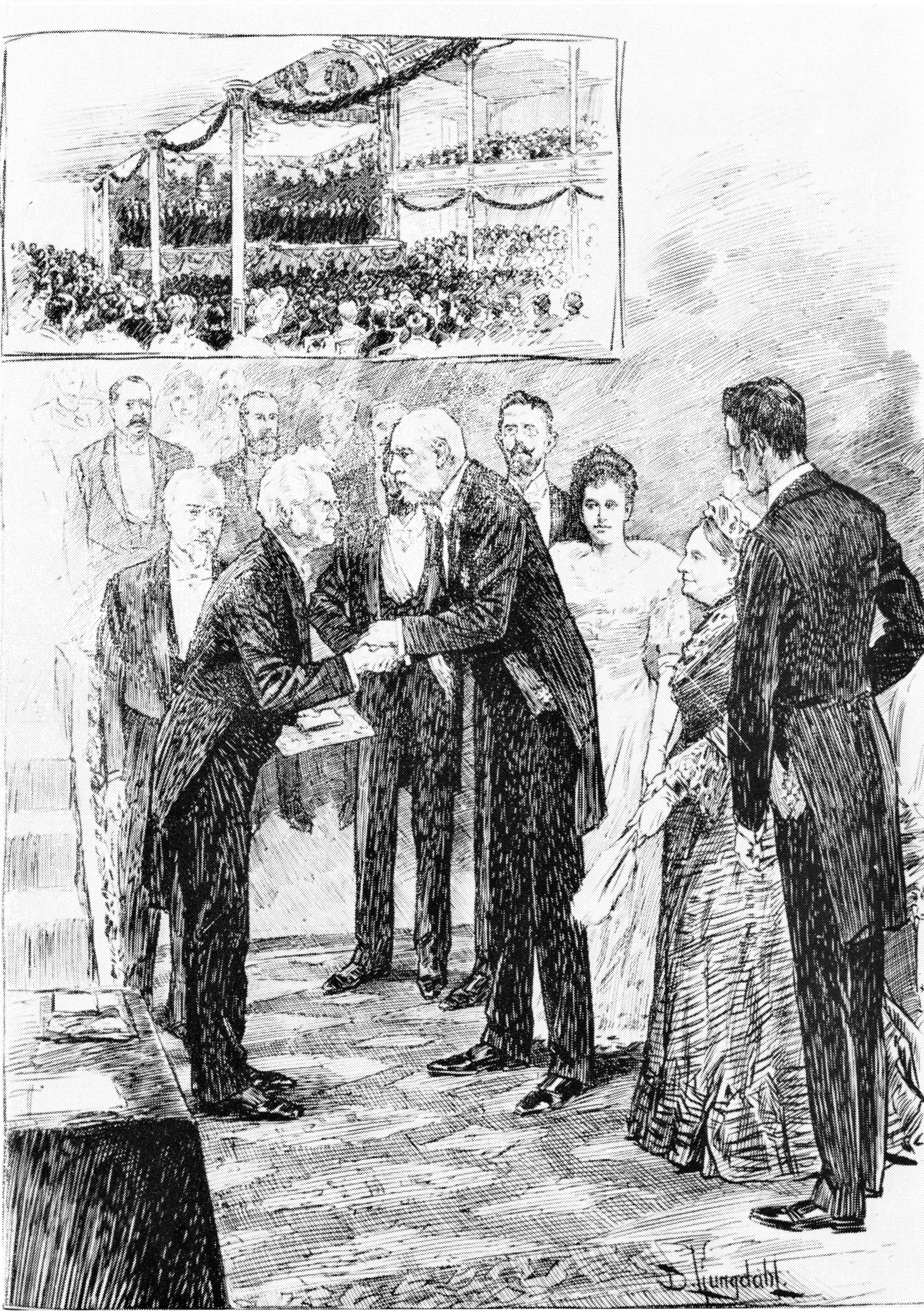Nobel Prizes
The idea and funds for the Nobel prizes originated in the will of Swedish industrialist Alfred Nobel who died in 1901. Recipients can be both individuals and organisation. Categories are Physics, Chemistry, Physiology or Medicine, Literature and Peace and recipients are selected by various committees based at institutions in Sweden and, in the case of the peace prize, a committee appointed by the Norwegian parliament. Selection has at times come under intense debate and criticism.

Nobel Prizes for Physics, Chemistry, Physiology or Medicine, Literature and Peace were first awarded in 1901, five years after the death of Swedish industrialist Alfred Nobel and according to his final will. The five year delay in establishing the Nobel Foundation, which co-ordinates the annual event and is responsible for investing funds to ensure continuance of the awards, and awarding the first set of prizes was the consequence of various ambiguities in Nobel’s will, which was unfortunately written without legal counsel. At the time of their inception, the Nobel Prizes were not only the first international prizes, but also the largest ones extant in monetary terms. The Bank of Sweden Prize in Economic Sciences in Memory of Alfred Nobel was instituted in 1968 at the bank’s tercentenary; the first prize was awarded the following year and is referred to as the Nobel Prize in Economics. The Nobel Prizes have traditionally been awarded on 10 December, the anniversary of Nobel’s death; except for the Peace Prize recipient in Oslo, all Nobel Laureates receive their prizes in Stockholm. Each laureate receives a gold medal, an individualised diploma and a sum of money. The exact value of the prizes is dependent on assets of the Nobel Foundation; in the year 2017 each prize was worth nine million Swedish kronor.
Laureates are chosen by different committees: for physics, chemistry and economics laureates are selected by the Royal Swedish Academy of Sciences, by far the largest group participating; the Nobel Assembly at the Karolinska Institute chooses the laureate in physiology or medicine and the literature laureate is selected by the Swedish Academy. The Peace Prize recipient is chosen by the Norwegian Nobel Committee, which is appointed by the Norwegian Parliament. Self-nomination and awarding a prize posthumously are disallowed. Rules now stipulate that each prize can have a maximum of three recipients per year.
Between 1901 and 2018 590 prizes were awarded (the prizes have been suspended 49 times, usually as a result of international conflicts such as the First and Second World Wars). The majority of recipients are individuals (904 in total to the end of 2018), but in addition, 24 organisations have received the award for peace. The laureate cohort is heavily male-dominated, with only 52 women in the select group, mainly for peace (17), literature (14), and physiology or medicine (12). Laureates have ranged in age from 17 to 96. Six individuals have chosen or been forced to decline the prize and four have been recipients more than once, as have two organisations.
Not unexpectedly, laureate selection has at times come under intense debate and criticism. Sometimes ‘obvious’ candidates have not received an award, e.g., Gandhi for Peace, Tolstoy or Strindberg for literature, or Mendeleev for chemistry. Conversely, a few laureates have been considered weak, unmotivated choices. On the whole, most laureates have stood the test of time. The Nobel Museum opened in Stockholm in 2001.
Further reading:
- Agneta Levinovitz and Nils Ringertz, eds., The Nobel Prize: The First 100 Years (London: Imperial College Press, 2001)
- Erling Norrby, ‘A Century of Nobel Prizes’, Proceedings of the American Philosophical Society, 4 (2002), pp. 323-336